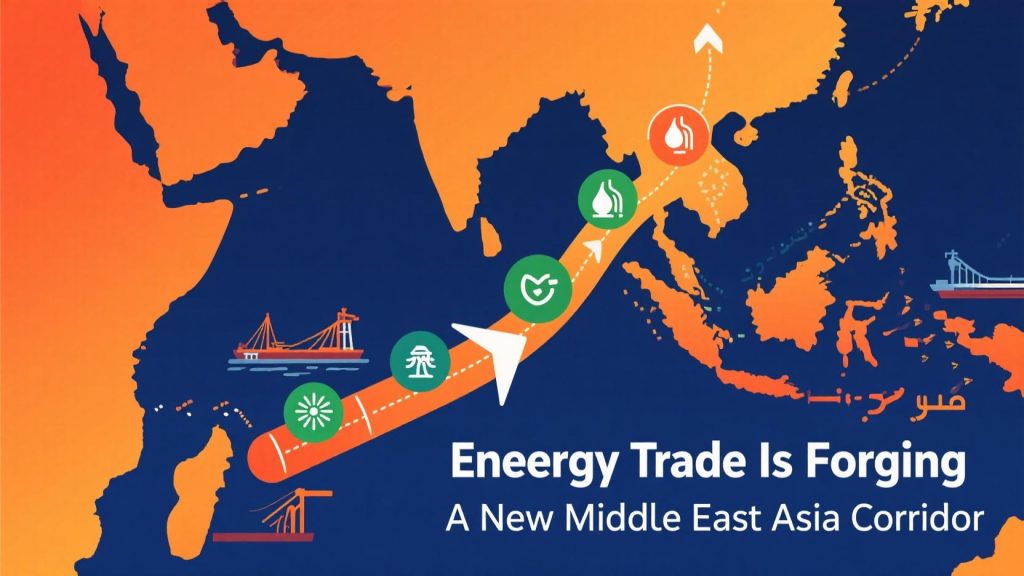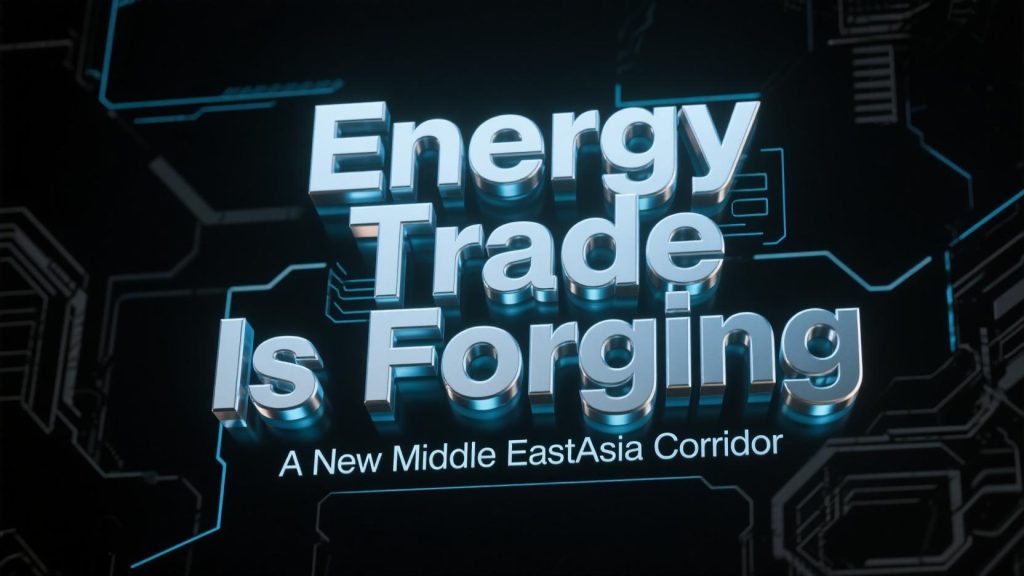From Oil to Hydrogen, the Gulf Looks Eastward
In 2025, global energy trade is no longer just about shipping barrels of oil from the Middle East to the West. A new corridor is emerging — one that connects the Gulf states with East and Southeast Asia, reshaping energy flows, industrial partnerships, and long-term geopolitical alignments.

From Hydrocarbons to Hydrogen
While oil and LNG still dominate, the real game-changer is green hydrogen. Saudi Arabia’s $8 billion NEOM Green Hydrogen Project began exporting to South Korea and Japan this year, marking a historic pivot toward clean energy exports. Meanwhile, the UAE has inked long-term agreements with Singapore to supply blue ammonia, derived from natural gas with carbon capture.
These energy deals are not just about fuel — they come with industrial collaboration packages, including infrastructure financing, port development, and supply chain co-investment.
Asia’s Energy Demand Shapes Gulf Strategy
As the EU phases out fossil fuel imports, Gulf producers are turning to China, India, and ASEAN as their primary customers. In response, countries like Qatar are expanding joint refining ventures and storage hubs in Malaysia and Gujarat, making Asian markets not just buyers but co-builders of energy infrastructure.
Shipping Routes and Industrial Ports Align
The newly launched “Energy Maritime Corridor”, a joint initiative by the UAE, Indonesia, and India, streamlines shipping lanes for clean energy products, reducing delivery times by 18%. Ports like Duqm (Oman) and Chabahar (Iran) are being restructured to handle modular hydrogen units, floating desalination plants, and AI-monitored tankers.

Financial and Technological Flows Follow
These energy links are creating new patterns of capital flow and technology transfer. Gulf sovereign funds are investing in Asian green tech startups, while Korean firms are co-developing water-efficient electrolysis technologies in the desert. The result is a deepening economic interdependency between regions that once had limited trade beyond oil.
Key Takeaway
The Middle East–Asia energy corridor is not just a commodity exchange; it’s the backbone of a new industrial alliance. As the energy transition accelerates, this Eastward reorientation is redefining both regions’ economic futures.
